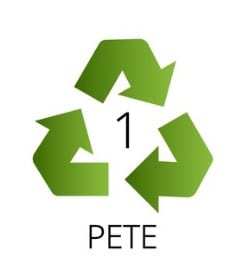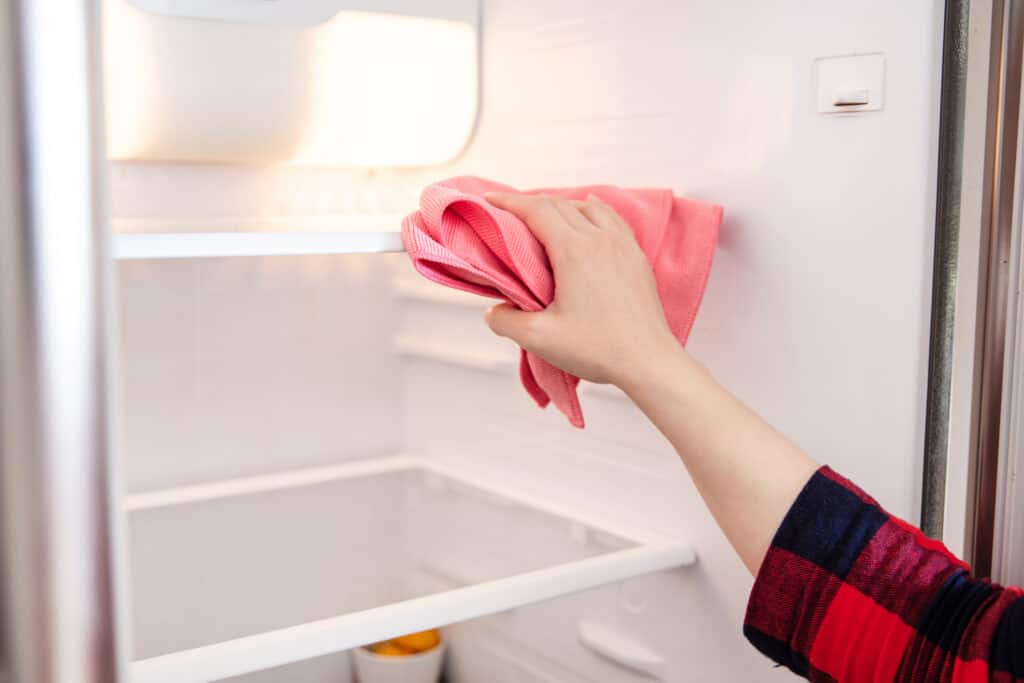Before you can get to health, you’ll have to do a healthy refrigerator freezer clean out, and maybe throw out a lot of things!
As I said in the Pantry Clean Out post, I’ve struggled, as you probably have, with what is “healthy”. Knowing the facts about nutrition and implementing those concepts are not the same. I REPEAT, according to a 2016 NPR poll 75% of people think they eat “healthy” but 80% don’t eat enough fruits and vegetables! So here is my best effort at what to put in your refrigerator-and be healthy. This is NOT an all-inclusive list! There are many more items that you could include, like condiments, some bread products, nuts, seeds and grains, and even water. Just be sure you’re getting whole foods without additives. READ the LABELS-not the front of the package!
The Healthy Refrigerator Freezer Clean Out
Before you can build our healthy refrigerator, you’ll need to get rid of some things-maybe a lot of things. While I’d like to believe that nothing in the refrigerator will have a bar code, I’m a realist. I do NOT have the perfect whole foods refrigerator; very few people do. (maybe my friend Dianne, the Dietician) But I can tell you what should NOT be in your refrigerator or at least what you should think long and hard about buying. If space is at a premium, like it is for me, only put things in the refrigerator that really need to be in there, that is, things that would go bad if they were in the pantry.
Cleaning out the fridge demands a little different approach from the pantry since the whole purpose of the fridge is to keep foods COLD. Everything will need to be taken out, at least one shelf at a time, so it’s important so set up a staging area and plan where you’ll put all your cold foods while you empty your fridge. If you have enough counter space, great, or you may need a folding table covered with a plastic cloth.
You may even want to use a cooler-be sure you clean out the grime from the last fishing trip. Equal parts of white vinegar and water will do the trick. I don’t need to remind you to clean your counters well also. Your sink should be empty and ready for stuff you’ll pour out. You might have your recycling bin close by since there are almost always containers to get rid of.
(note about recycling: most plastics don’t get recycled.) Check for these two symbols:


Glass is easily recyclable, as is cardboard that is not greasy.
Healthy Refrigerator Clean Out Supplies
Get all your supplies together (vinegar water (half vinegar and half water) in a spray bottle-this is really cheap!), masking tape, colored stickers to mark what you’ll need to get rid of when the container is empty. Unless your fridge is small, you should probably start at the top and work your way down, one shelf at a time. I take out the glass shelves and the drawers and clean them separately in the sink with dish soap and wipe down everything else with vinegar water. Dry all surfaces with a clean cloth-microfiber works well with no lint. Have a few clean dish cloths ready to wipe down the outsides of containers. A box of baking soda or two in the back of the fridge will help keep the funky smell away. It’s a good idea to write the date on the box so you know when the replace it.
Here’s your list:
Cooler/table
Vinegar water in spray bottle
Masking tape
Marker
Colored stickers
Trash can
Recycle bin
Clean cloths for wiping/drying-microfiber are great
Towels for the floor
Now you’re ready to junk the junk!
Some will advise baby steps, but as I said in my Pantry Clean Out post, I think you should try to go cold turkey if you can afford to. If you can’t do it this way, put an X or a colored sticker on anything you know you need to throw out, but want to use up and add it to a running list of “replacement” items. Be sure and toss it when you get the replacement.
- First, plan a couple of hours and get your kids involved if you have them at home. Make it a game and come up with a reward. It’s great nutrition education for kids!
- Get your materials together:
Magnifying glass (ingredient lists can be very tiny…for a reason!), trash can, black marker, adhesive labels (colored are good), clear tape, scissors, and a clip board.
- Read the ingredient labels on the back of all items. IGNORE the front of the package, box, or container. This is advertising! If there are more than 5 ingredients, (unless they’re things you recognize), be careful. Ingredients your grandma wouldn’t recognize are also very suspicious-you should be somewhat afraid of these! If sugar is one of the first five ingredients on any label, this is a very bad sign!
- Take out items you want to replace right away (items that you are low on), have strange ingredients, lots of sugar or are highly processed convenience foods. Either toss them and add to the “buy now” or put a sticker on them and add them to the “buy later” list.
- Food items with the following words should be filed in round file (AKA trash can). Many of these chemicals are only “food-like substances”. The healthy refrigerator does NOT have these:
- Trans fats
- Hydrogenated or partially hydrogenated
- Soybean oil, vegetable oil (try to avoid sunflower and safflower also-they hide in processed foods!)
- Canola oil (hard to avoid, but it’s very inflammatory. Ditch it if you can.)
- Interesterified oils (commonly found in baked goods like cookies, crackers, biscuits, cakes and icings, dairy fat replacers, pie crust, popcorn, flatbread, and tortillas.
- Artificial sweeteners: Splenda (sucralose), aspartame, saccharine
- Artificial anything: colors, preservatives (tocopherol is really vitamin D, grapefruit extract, citric acid are natural preservatives).
- Monosodium glutamate (an excitotoxin. These kill brain cells per Dr. Mark Hyman, “What the Heck Should I Eat?” Don’t trust the FDA to keep unhealthy chemicals out of your food. More on the FDA later)
- Sugar (and many aliases-see post titled “Sugar, by any other name”: dextrose, maltodextrin, corn syrup, high fructose corn syrup, etc.) If sugar is one of the first five ingredients, that tells you that there is a lot of it! This is a tough one to get rid of completely but be aware of the sugar aliases and where they fall in the ingredient list. The goal is to get rid of added sugar completely! If you’re having any of these sweeteners, definitely avoid sugar that is not “cane sugar” (it would come from sugar beets and is a GMO crop-more on GMO’s later) and avoid “high fructose corn syrup” (metabolized different from sugar and can damage the liver and the gut, according to Dr. Mark Hyman.) Get this: unless sugar is cane sugar is organic, it could have been sprayed with an herbicide (like Round-Up) just like sugar beets!
Good News! Nutrition labels now require grams of added sugar to be listed.
One teaspoon=four grams. The American Heart Association recommendation is no more than 6 teaspoons per day for women and no more than 9 teaspoons per day for men. It adds up fast!
- Sodium: A word about salt (sodium chloride). The Dietary Guidelines for Americans recommends limiting sodium to less than 2,300 mg a day-this is a little less than a teaspoon. Processed foods are notorious for adding way too much salt. Read the nutrition label will give you a clue but take a look at the serving size listed on the nutrition label. You may be shocked at how small the serving is. Most Americans get more than 3,000 mg per day. You do need sodium but controlling it with your own saltshaker is a much better idea. If you find that something in your pantry has 800 mg of sodium, remember that this is more than one-third of the total sodium allowance for the day! Caution!
Here’s what I say generally about the healthy refrigerator clean out, and my good friend Dianne the Dietician agrees:
Glass containers are always better than plastic.
Be a label detective!
Look at the back of the package, bottle, or jar.
You might even need a magnifying glass, as some food companies try to hide ingredients by making them microscopic!
No leftovers should be kept more than 4 days (per Mayo Clinic).
No open cans
No open bags
No funky smelling or looking food
No duplicate items.
Look for an upcoming post on food additives: what they are and what to know about them.
Next Steps
- Remove produce (or any other items) that does NOT belong in the fridge: uncut tomato, potato, onion, avocado, garlic, banana, pineapple. If tomatoes are ripe and ready to eat, I put them in the fridge. If you put tomatoes in the fridge before they’re ripe, they won’t ripen.
- Mark with an X or a colored sticker the items you want to replace when you run out of them.
- If any item is about to expire that you want to be sure and use up, mark the date on it and make it hard to miss.
- Throw out any items that you want to replace right away and make a list of those.
- Be sure you can read labels.
Summary
- Plan a time to clean out.
- Get your materials together.
- Read ingredient labels on the back only. You might need a magnifying glass!
- Get rid of items that are not “whole” or real.
- List items you’ll eventually get rid of.
- Mark expiration dates if soon.
- Label and date any leftovers you think are still good.
- Throw out anything questionable.
- Organize by first in first out as much as possible.
You’re on your way to creating a healthy refrigerator-and saving money by not accumulating things you don’t use!
Deep Clean Your Refrigerator/Freezer
So now onto the subject of cleaning, which I find way more boring and less fun-but necessary. A refrigerator is like a petri dish for germs. Yes, they do grow more slowly due to the cool/cold temperatures, but bacteria and fungi/mold are still around. A clean refrigerator will surely smell better and have fewer germs than a dirty one. Of course, having a clean refrigerator and freezer does take some work. It’s important to keep those appliances clean so they cool better and cut down on food contamination.
Get into the habit of wiping up spills promptly and do a serious cleaning of the refrigerator every month or two, and make it a family affair. There are lots of great lessons for kids when it comes to cleaning something like a refrigerator. Here is a good article on how to do a deep clean of your refrigerator if you need to do it now. At least the junk is gone and everyone can find everything!
For more tips and advice on making your refrigerator so clean you’ll need shades to look into it, check out How to Clean Your Refrigerator the Right Way!
Defrosting the freezer is another matter-a job for another day, for sure. Newer freezer models don’t require defrosting, but even a new chest freezer can get pretty frosty! Bob Vila has some great tips on defrosting and sanitizing your freezer, so check it out for more inspiration.
If you feel like you need to clean out your freezer right away (Maybe you can’t close the lid/door or frost buildup is so thick that you don’t have as much room as you used to.), there is a very helpful WIKIHOW that can give you the information you need.heck out this wikihow article:
I think it’s a good one with one caution: I do NOT recommend using a hair dryer to aid in defrosting because of the risk of..ELECTROCUTION! especially with kids running around.
I didn’t include cleaning the refrigerator freezer in prior posts, because it’s a job unto itself. Since the function of the kitchen revolves around food, I thought it was more important-and surely more exciting to talk about that first.
Next, we’ll stock the REAL FOOD refrigerator.

